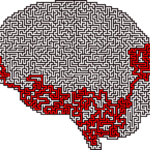Embracing A Holistic Healing

Summary: In “Buddha in the Waiting Room” by Paul Brenner, health as a state of mind is explored deeply, emphasising holistic well-being beyond mere absence of illness. Brenner critiques Western medicine’s reductionist approach, advocating for integrative practices like diet, exercise, and meditation to foster true healing rooted in mental and emotional balance.
Health Is A State Of Mind
Re-Finding The Whole In Healing
This book then went on to discuss Candace Pert’s work (see my blog post here on this subject). He highlighted how Pert’s work demonstrates that the mind and body can no longer be considered as separate systems. He then argued that, if the mind and body are not separate, isn’t it possible for there to be not only psychosomatic illness but also psychosomatic health? In other words, can’t the mind heal the body as much as the mind can make the body sick? I truly believe it can and, in fact, the mind is crucial in the healing journey. Healing must be a whole-body experience.
Chronic Illness in “Buddha in the Waiting Room”
Whilst chronic illness is a not a focus of “Buddha in the Waiting Room”, there is one brief paragraph focussed on it. Brenner merely states that Western medicine has a long way to go when tackling these kinds of conditions (I concur!) and that the very nature of chronic illness requires that patient to “actively contribute to [their] recovery, through introspection, followed by lifestyle changes” (Brenner, 2002, p. 27). It was nice to get this confirmation that I’m heading in the right direction!
Brenner’s Practical Tools
There are some more practical tools discussed in the book. Diet, exercise and meditation are a central focus. Journalling (and particularly “The Journal Workshop” by Ira Progoff) also receives praise. Self-love is hinted at all the way through book, sometimes more emphatically than at other points. But, for Brenner, the health-increasing benefits of each of these practices is really only brought about if health already exists. In other words, the mind must be healthy first in order to receive the benefits of the practices. He therefore argues for each of us to be mindful of how you are feeling and thinking before you eat, exercise or meditate.
As I come to the end of this mini book-review, I will leave you with my favourite quote from “Buddha in the Waiting Room”. I hope that it leaves you with a similar deep resonance, an uncovering of the truth within, that I felt that first time my eyes met it.

So what priorities is your Type 1 Diabetes requesting you re-prioritise? What’s your first step in that direction?

GET HEALINGT1D’S FUTURE ARTICLES IN YOUR INBOX!
Get the latest musings and findings straight to your email inbox.

Natalie is a blogger with Type 1 Diabetes. Natalie's special gifts are questioning the status quo and being a rebel. She is using these gifts to question medical 'knowledge' and find a true cure for Type 1 Diabetes.
Recent Comments:
- Sandra on Nutrition Update
- latestModapks on Daniel Darkes
- Natalie Leader on Daniel Darkes
- Senna on Daniel Darkes
- Sandra on High Blood Pressure




